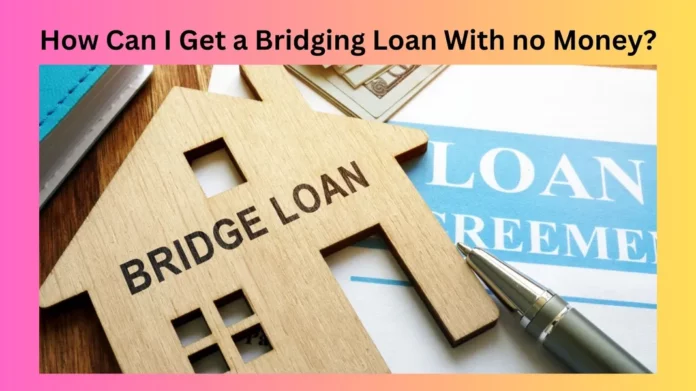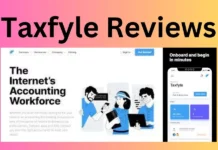In the ever-changing landscape of personal finance, finding oneself in need of quick capital without having money readily available can be a daunting challenge. Whether it’s seizing a real estate opportunity, addressing a business emergency, or managing unexpected personal expenses, the need for urgent funds may arise when least expected.
One viable solution that comes to mind is a bridging loan. In this article, we’ll delve into the nitty-gritty details of how to secure a bridging loan with no money on hand.
1. Understanding Bridging Loans:
1: What Are Bridging Loans?
Bridging loans, also known as bridge financing, serve as a temporary financial solution designed to “bridge the gap” between immediate cash needs and a future, more permanent financing arrangement. Typically, these loans are short-term, with durations ranging from a few weeks to a few months.
2: The Mechanics Behind Bridging Loans
Before diving into obtaining a bridging loan with no money, it’s crucial to understand how these financial instruments work. Bridging loans are secured against an existing property or asset, providing a quick injection of cash while the borrower navigates through the process of securing long-term financing or selling an asset.
2. Getting a Bridging Loan With No Money:
1: Assess Your Assets
To embark on the journey of obtaining a bridging loan with no money in hand, start by taking stock of your existing assets. Whether it’s real estate, valuable possessions, or even business assets, having collateral is essential.
2: Seek Professional Advice
Navigating the intricacies of bridging loans can be complex. Seeking advice from financial advisors or mortgage brokers can provide valuable insights into the process, helping you understand the options available and the best course of action for your specific situation.
3: Explore Lenders Specializing in No Money Down
Not all lenders are created equal, and some specialize in offering bridging loans with minimal upfront costs. Research and identify lenders who cater to individuals seeking loans without a substantial initial investment.
4: Present a Solid Exit Strategy
Lenders are more likely to provide a bridging loan with no money down if you can present a robust exit strategy. This could involve detailing how you plan to secure long-term financing or outlining the steps you’ll take to generate the funds needed to repay the loan.
5: Consider Joint Ventures or Partnerships
Collaborating with partners or entering into joint ventures can be an effective way to secure a bridging loan without having to provide all the necessary capital yourself. This shared financial responsibility can make lenders more amenable to providing the loan.
3. Engaging the Reader:
As we navigate the intricacies of obtaining a bridging loan with no money, it’s important to remember that flexibility and creativity are your allies. Think outside the traditional financing box, and don’t hesitate to explore unconventional avenues to secure the funds you need.
Using an informal and conversational tone, let’s imagine sitting down for a cup of coffee and discussing these financial strategies with a friend. The key is to make the reader feel at ease while absorbing essential information.
4. Active Voice and Rhetorical Questions:
So, you’ve found yourself in a financial bind, and the idea of getting a bridging loan with no money feels like navigating uncharted waters, right? Fear not! We’re here to break it down and simplify the process, step by step. Ready to explore your options? Let’s dive in.
Have you ever wondered how successful investors and entrepreneurs manage to secure quick capital without breaking the bank? The answer lies in the art of obtaining bridging loans with little to no money down.
5. Keeping It Brief:
In the fast-paced world of finance, time is of the essence. We won’t bog you down with unnecessary details or jargon. Instead, we’ll cut to the chase and provide you with actionable insights to help you secure that bridging loan without a hefty initial investment.
6. Incorporating Analogies and Metaphors:
Think of a bridging loan as a financial lifeboat, ready to rescue you when the storm of unexpected expenses hits. Just like a bridge connecting two shores, this temporary financing solution serves as a pathway between your immediate financial needs and a more stable, long-term solution.
Conclusion:
In conclusion, obtaining a bridging loan with no money on hand is indeed possible with the right strategy and approach. By assessing your assets, seeking professional advice, exploring specialized lenders, presenting a solid exit strategy, and considering joint ventures, you can navigate the financial waters and secure the funds you need.
Remember, the key is to stay proactive, think creatively, and be open to unconventional solutions. With the right mindset and a well-thought-out plan, you can bridge the gap between financial challenges and success.
FAQs:
Q1: Can I get a bridging loan with no money down?
Yes, it’s possible. By exploring specialized lenders, presenting a solid exit strategy, and considering joint ventures, you increase your chances of securing a bridging loan without a significant upfront investment.
Q2: How long does it take to get a bridging loan?
The timeline for obtaining a bridging loan varies, but it’s generally quicker than traditional loans. The process can take a few weeks, depending on the complexity of your situation and the lender’s requirements.
Q3: Are there risks involved in getting a bridging loan with no money down?
Like any financial decision, there are risks involved. It’s crucial to carefully assess your ability to repay the loan, understand the terms, and have a clear exit strategy to mitigate potential risks.
Q4: Can I use personal possessions as collateral for a bridging loan?
Yes, valuable possessions can be used as collateral for a bridging loan. This includes jewelry, art, or other high-value items. Be sure to discuss the specifics with your chosen lender.
Q5: What happens if I can’t repay the bridging loan on time?
If you encounter difficulties repaying the loan on time, it’s essential to communicate with your lender. They may offer extensions or alternative solutions. However, it’s crucial to address any issues promptly to avoid potential legal consequences.















